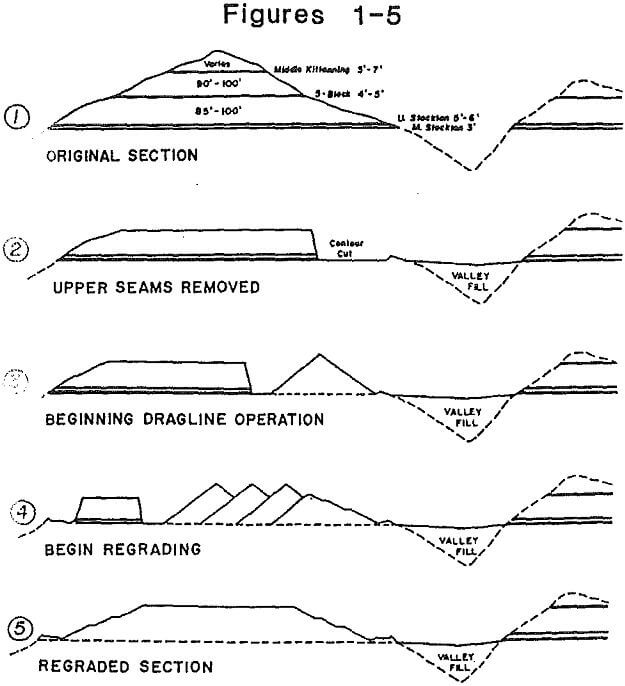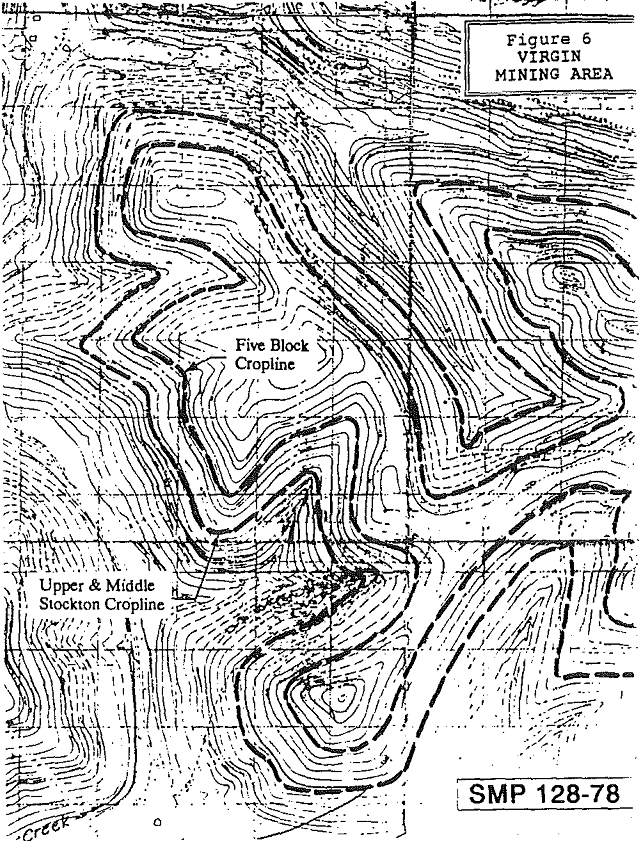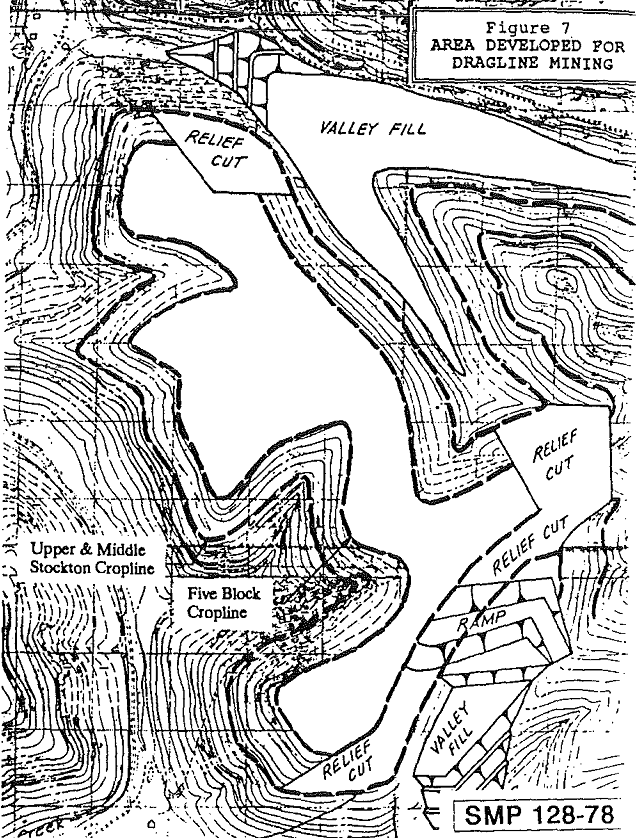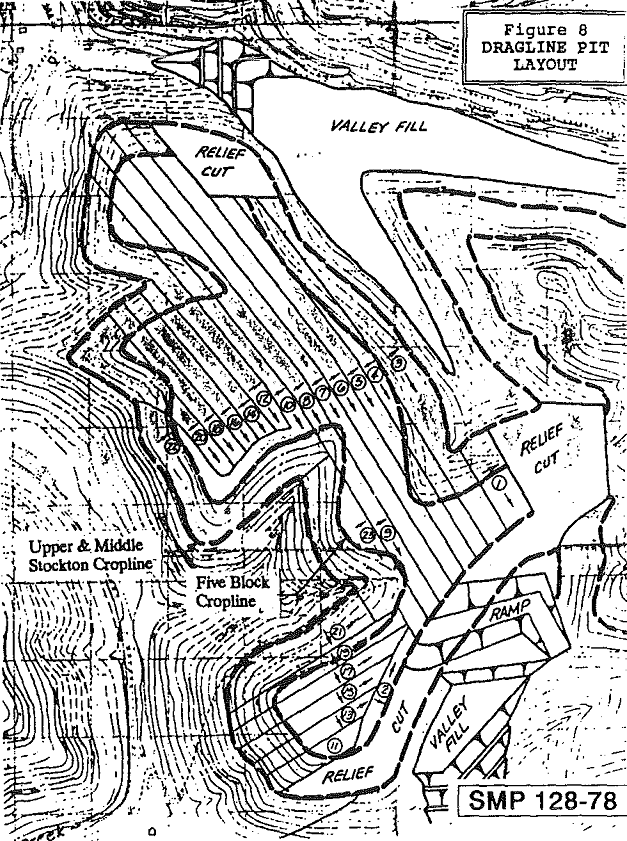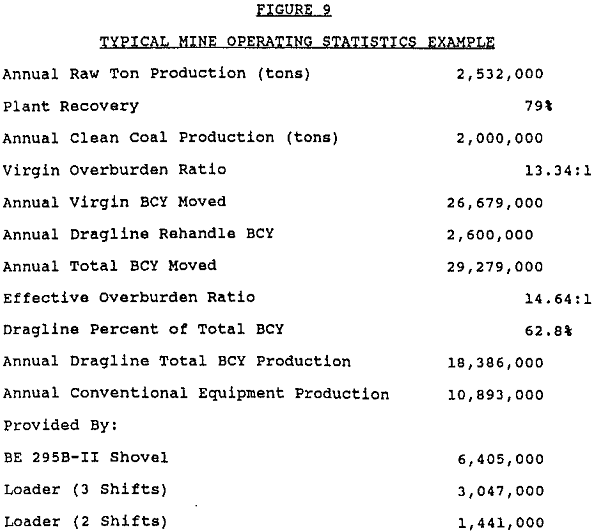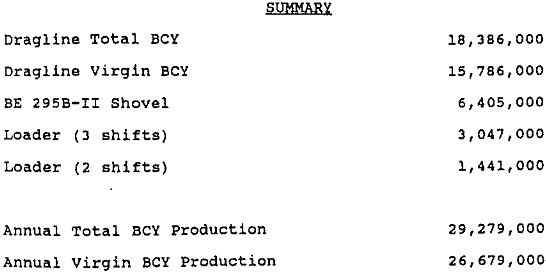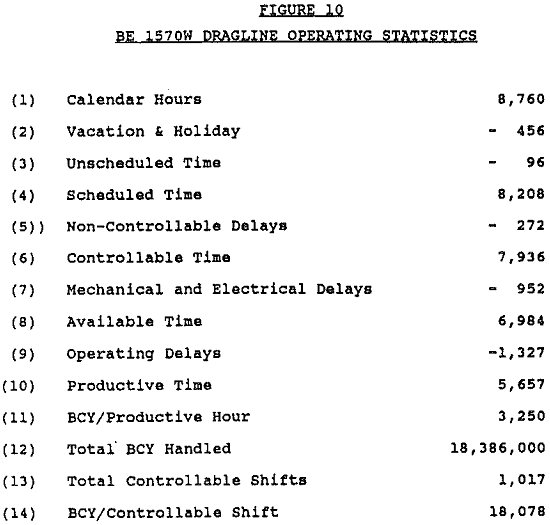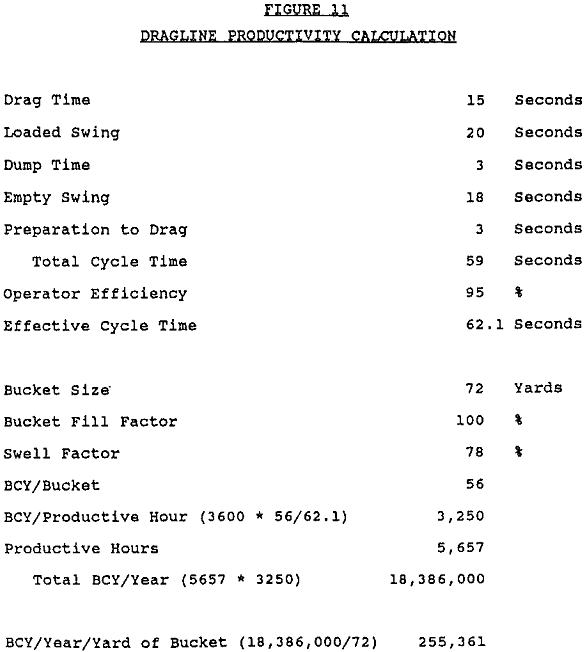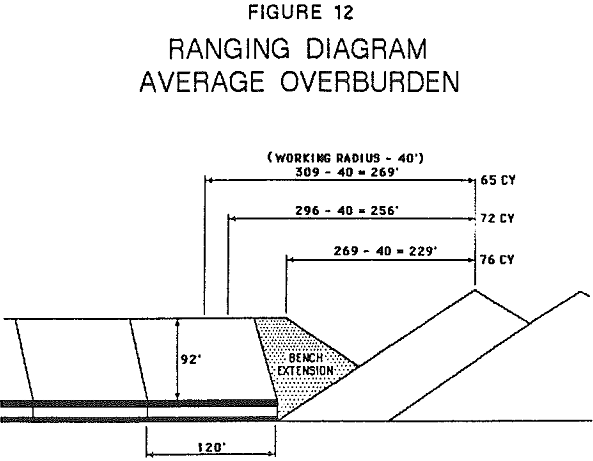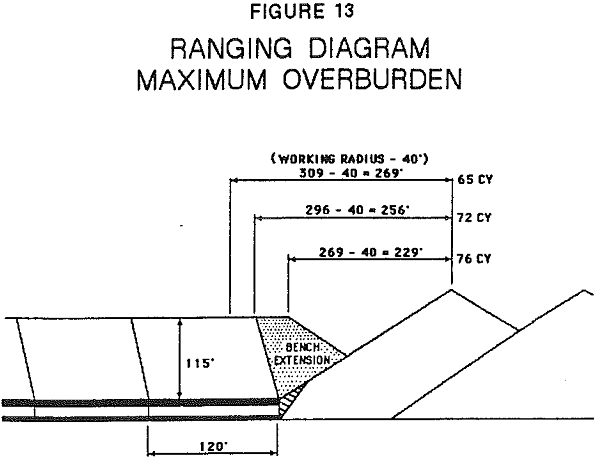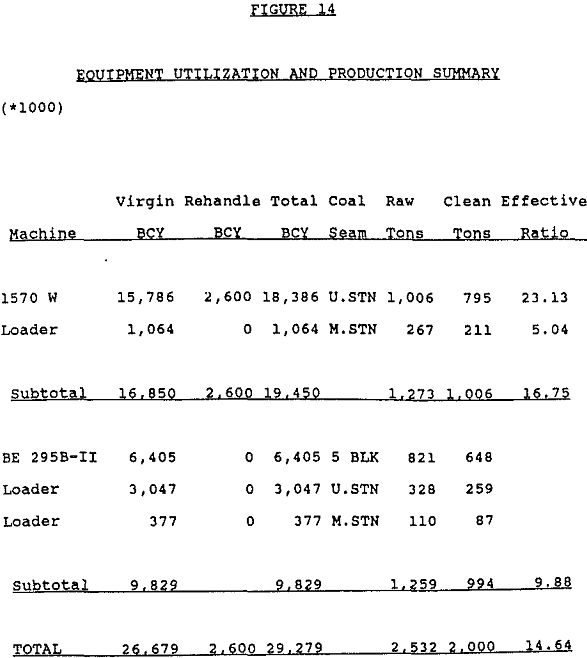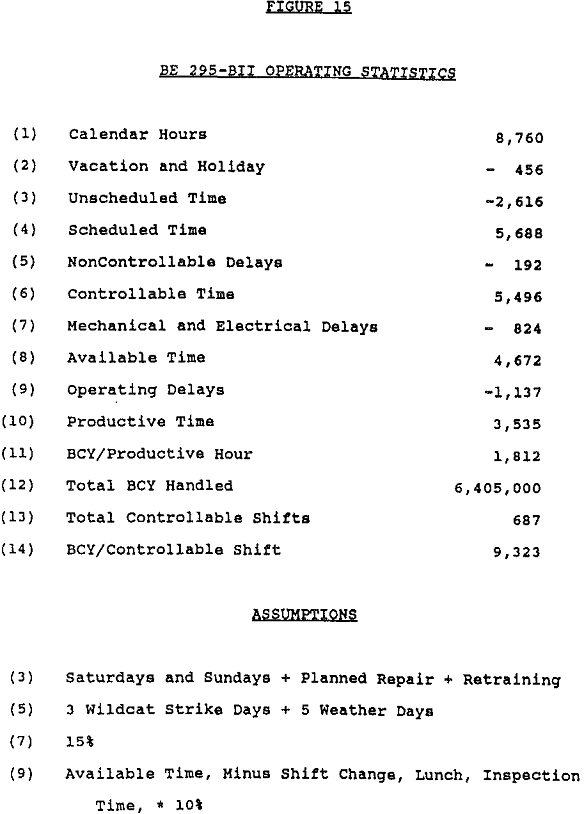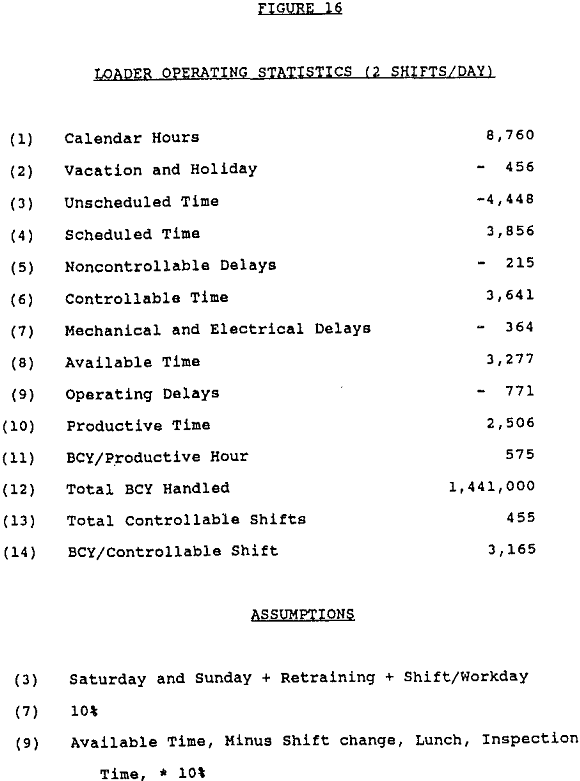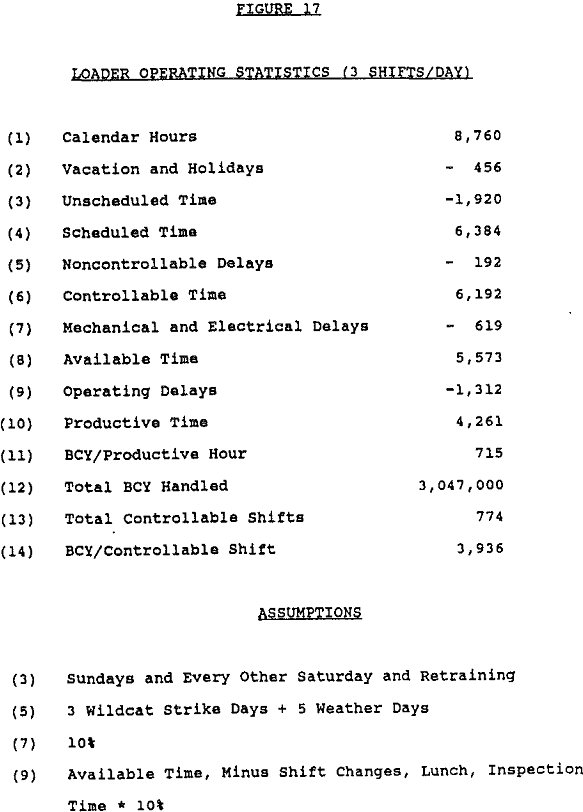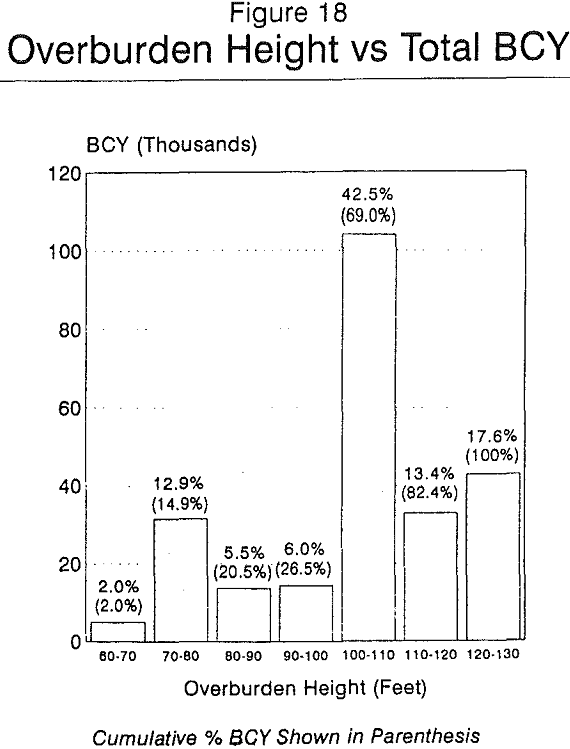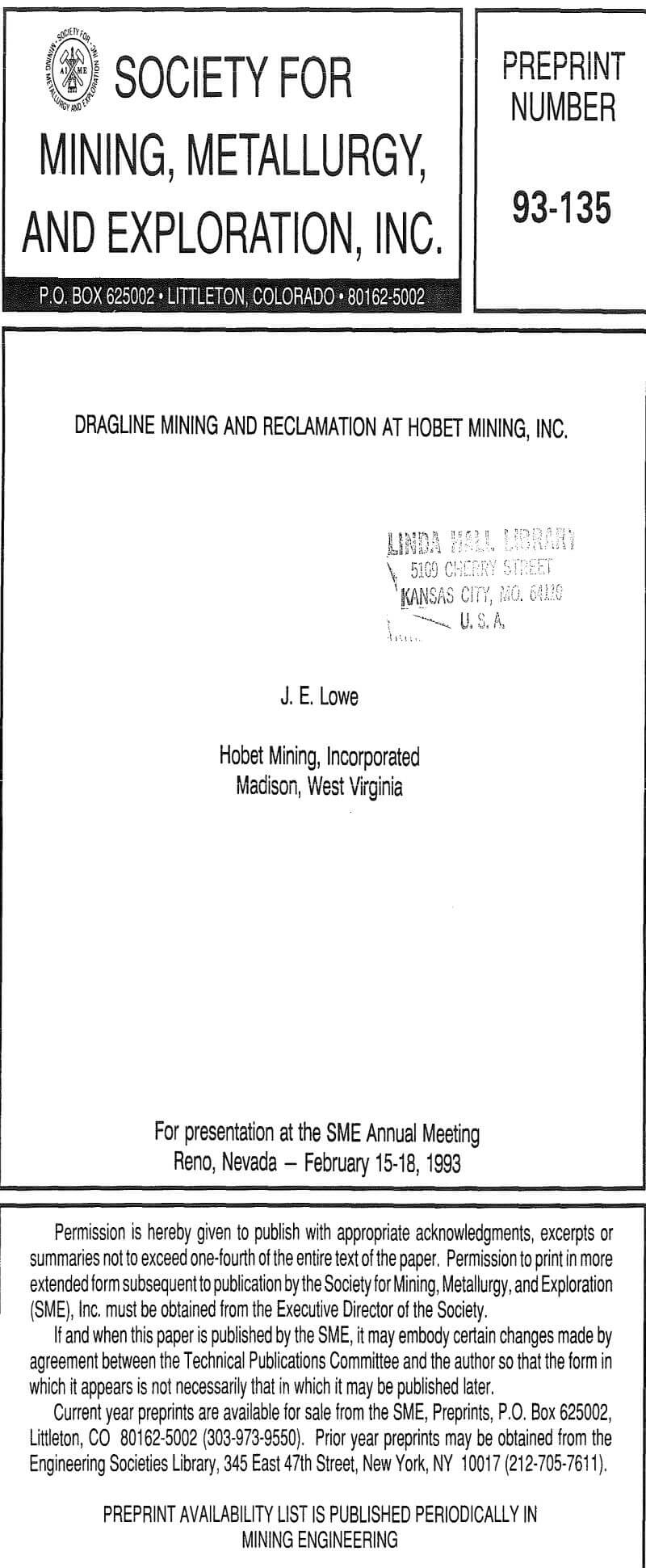The unique application of a large walking dragline in the mountains of southern West Virginia was developed and implemented by Hobet Mining, Inc. Hobet is an independent operating subsidiary of Ashland Coal and is headquartered at the No. 21 Mine in Boone County, West Virginia, near Danville. Hobet also operates the 07 Mine located in Logan County, West Virginia, near Holden. Both mines are similar in equipment and manpower used; both produce over 2,000,000 tons of clean coal annually.
Formerly, loaders and trucks, or shovels and trucks, had been used for this type of mining. The continuous acreages at Hobet’s 21 mine site prompted the consideration of larger mining equipment – namely, the dragline.
Typical mountaintop removal involves removal of all overburden down to the Middle Stockton seam and placement of the overburden in the adjacent valley with some backstack on the Middle Stockton bench. Certainly, dragline application on the original topography would have been impossible because of the steep slopes, irregular shapes, and overall relief; a dragline requires a relatively flat surface area on which to operate.
Using some imagination, look again at the cross-section and consider removing the overburden to the 5-Block level only and placing it in the adjacent valley fill on the right. A flat area on which to operate the dragline is now available. Placing a dragline on the 5-Block level and digging to the Upper Stockton creates a rather conventional dragline operation. The adjacent valley fill then provides an area on which to cast the spoil.
In addition to the dragline, it is necessary to take a closer look at other equipment assignments. Loader/truck and/or shovel/truck operation is utilised for overburden removal from the top of the mountain down to the 5-Block. The shovel is most appropriate on the interval between the Middle Kittanning and 5-Block seams due to the larger bench widths and greater volume of overburden. The smaller, irregular area above the Middle Kittanning is more appropriate for the loader/truck combination. The parting between the Upper and Middle Stockton seams is quite thin (approximately 8 feet) and is removed by the wheel loaders. A shovel would not be desirable for use on the 8 foot digging face and lacks the mobility to move quickly between pits. The dragline excavates the interval between the 5-Block and Upper Stockton seam.
Approximately ten thousand acres of coal-bearing land is required for the 20-year mine life, and that roughly measures about 5 miles x 3 miles. The area is divided into mining areas by topographical characteristics. Figure 8, in fact, represents the first mining area that was mined, and it is typical of all the areas. The general rule of design is to maximise pit lengths and strategically locate valley fills to accept spoil from initial cuts. This minimises the number of relief cuts, and maximises the percent of overburden assigned to the dragline. Notice that where pit lengths are short the machine is alternated between pits to allow adequate time for coal and parting removal. The ramp shown is set on a six percent grade and provides dragline access to the 5-Block elevation. It later serves as the exit ramp, when mining is completed. Grade changes such as these are necessary only three times in the mine life.
There were three parameter combinations of dump radius and bucket size available when selecting the dragline for Hobet 21.
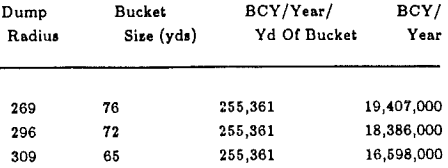
Boom geometry is a function of pit geometry. Pit geometry is, of course, a function of pit width and overburden depth. The pit was assigned a 120 foot width to provide adequate width for coal and parting removal. Overburden depths (distance from 5-Block to Upper Stockton) vary over the mining areas.
Another factor considered that would affect boom geometry was the blasting technique. Two techniques that could have been applied were open-face and buffered. Open-face blasting would involve shooting only the width of the pit the dragline was digging. It would provide a solid highwall to dig against and provide for some cast yardage from the blasting operation.
Moving up toward the maximum 115 feet vertical digging height, the 72 yard machine reaches its limitations at 103.5 feet. To go higher would require a costly bench extension (as stated above) or do what is pictured in Figure 13. Here the spoil line intersects the top of the Upper Stockton seam rather than the bottom of the Middle Stockton as shown in Figure 12. The removal of the spoil toe by endloaders allows the 72 yard machine to dig up to 115 feet. The 76 yard still requires a bench extension; the 65 yard is of course adequate.
The working weight of more than eight million pounds includes one million pounds of ballast. The boom is 325 feet long on 35 degrees. Hoist and drag ropes are 3 ¾ inch diameter. Motor generator sets total 10,000 HP. Twenty-two thousand nine hundred volts A.C. enters the machine and is reduced to 6,900 volts A.C. in a 10 MVA transformer.
The D. C. motors are as follows:
Drag……………………………………………………………………..4 x 1300 HP
Hoist…………………………………………………………………….6 x 1300 HP
Swing……………………………………………………………………4 x 1045 HP
Propel…………………………………………………………………..2 x 500 HP (per side)
The mine also schedules one loader 3 shifts/day, 5 days/week. This loader is matched with three 120-ton Wabco rock trucks and is used for development. A second loader is schedule 2 shifts/day, 5 days/week and is matched with 4 Caterpillar 777 rock trucks. The mobility and flexibility of this spread lends itself to interburden removal in the dragline pits and performing general support work for the other equipment.
The mine’s doeer fleet is composed of CAT D10’s, D9’s and D8’s. Spoil leveling is generally done with the D10’s. The D9’s are normally used to feed material to endloaders, and the D8’s are used on fills and drill benches.
Drilling varies in site dependent upon the application. Dragline drilling is done with a Marion M-3 unit equipped with a 10-5/8 inch rotary bit and 60 foot drill pipe. Since dragline overburden rarely exceeds 115 feet, the M-3 can drill most situations with only one steel change. The unit is equipped with Marion’s automatic drill control system and operates on 7200 A.C. Drill patterns are normally 34 feet x 34 feet using an emulsion blend.
Coal loading is accomplished by 992C CAT loaders. Coal shooting is unnecessary; the loaders break the coal from the seam quite easily because of the well established cleavage patterns. Haulage is by 85-ton Dart 2085 haulers.
A 4.5 mile overland raw coal conveyor installed in 1988 greatly reduces the coal truck haul to the preparation plant.
The feasibility of a dragline operation at Hobet 07 was prompted primarily by the favorable operation the BE 1570 experienced at Hobet 21.
The mine plan at this site would be basically similar to that of the other operation. Namely, this would be:
- Remove all seams and overburden down to the horizon upon which the dragline would operate by conventional equipment, and
- Mine the lowest surface mineable seam on the property by dragline.
The dragline operates at the Stockton Seam horizon and excavates down to the Coalburg seams.
Reclamation is an ongoing part of the mining cycle. It is included in the twenty year plan and follows immediately behind the active mining. As with all facets of the operation, reclamation requires much coordination and teamwork.
Our employees make extra efforts when it comes to reclamation. Because they enjoy the outdoors and like to hunt and fish, it is important for them personally, as well as for their employee commitment, to leave the land in better condition than when they started. This is especially difficult in the mountainous areas of West Virginia where the slopes are steep and where huge amounts of overburden must be moved.
With our reserves, large scale mining equipment and dedicated employees, we expect to continue with such successes.
